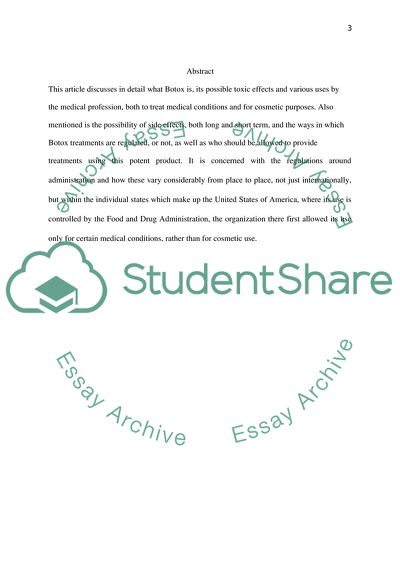Cite this document
(What Botox Is In Detail Research Paper Example | Topics and Well Written Essays - 2750 words, n.d.)
What Botox Is In Detail Research Paper Example | Topics and Well Written Essays - 2750 words. Retrieved from https://studentshare.org/health-sciences-medicine/1778626-botox
What Botox Is In Detail Research Paper Example | Topics and Well Written Essays - 2750 words. Retrieved from https://studentshare.org/health-sciences-medicine/1778626-botox
(What Botox Is In Detail Research Paper Example | Topics and Well Written Essays - 2750 Words)
What Botox Is In Detail Research Paper Example | Topics and Well Written Essays - 2750 Words. https://studentshare.org/health-sciences-medicine/1778626-botox.
What Botox Is In Detail Research Paper Example | Topics and Well Written Essays - 2750 Words. https://studentshare.org/health-sciences-medicine/1778626-botox.
“What Botox Is In Detail Research Paper Example | Topics and Well Written Essays - 2750 Words”, n.d. https://studentshare.org/health-sciences-medicine/1778626-botox.


